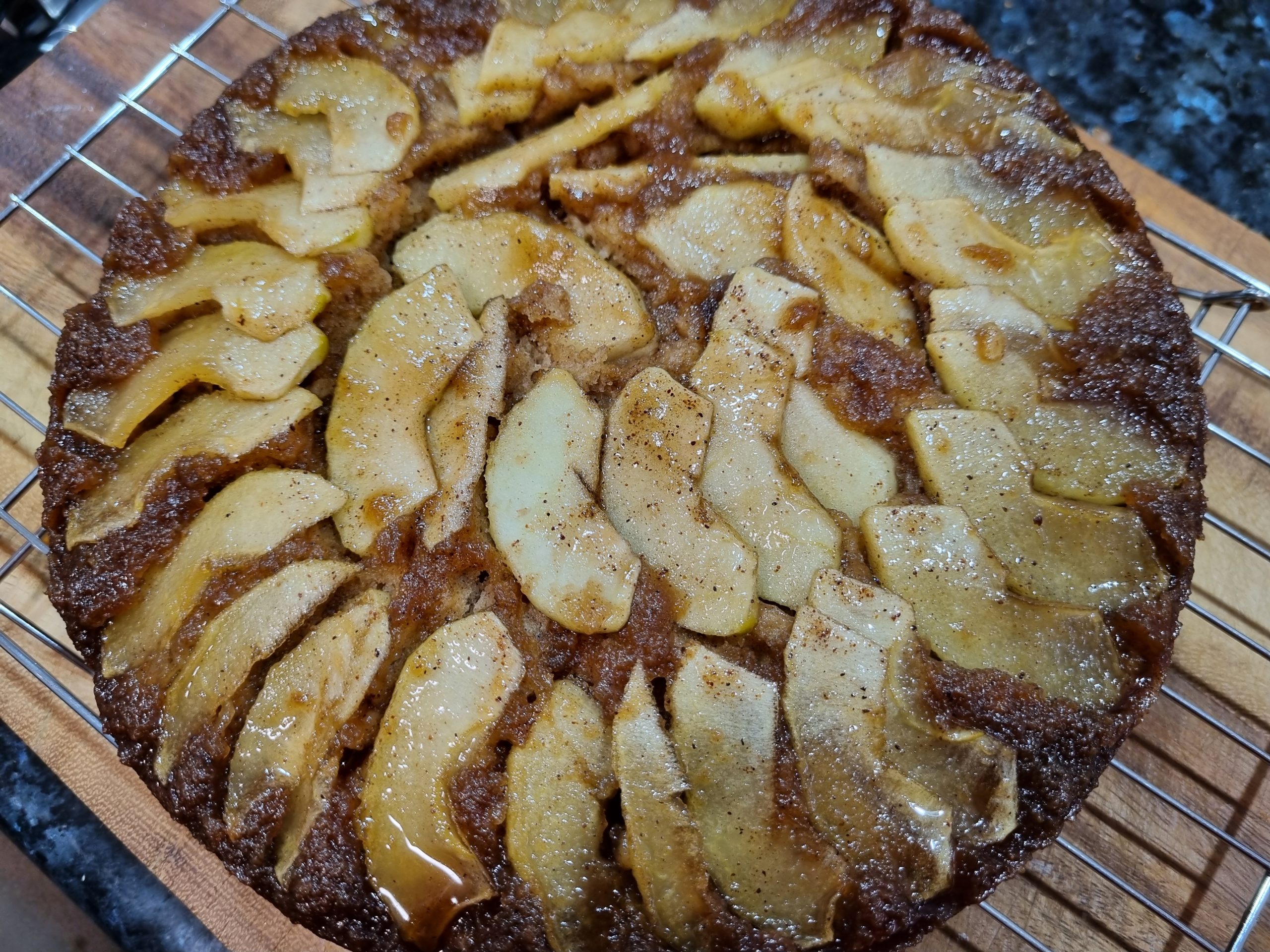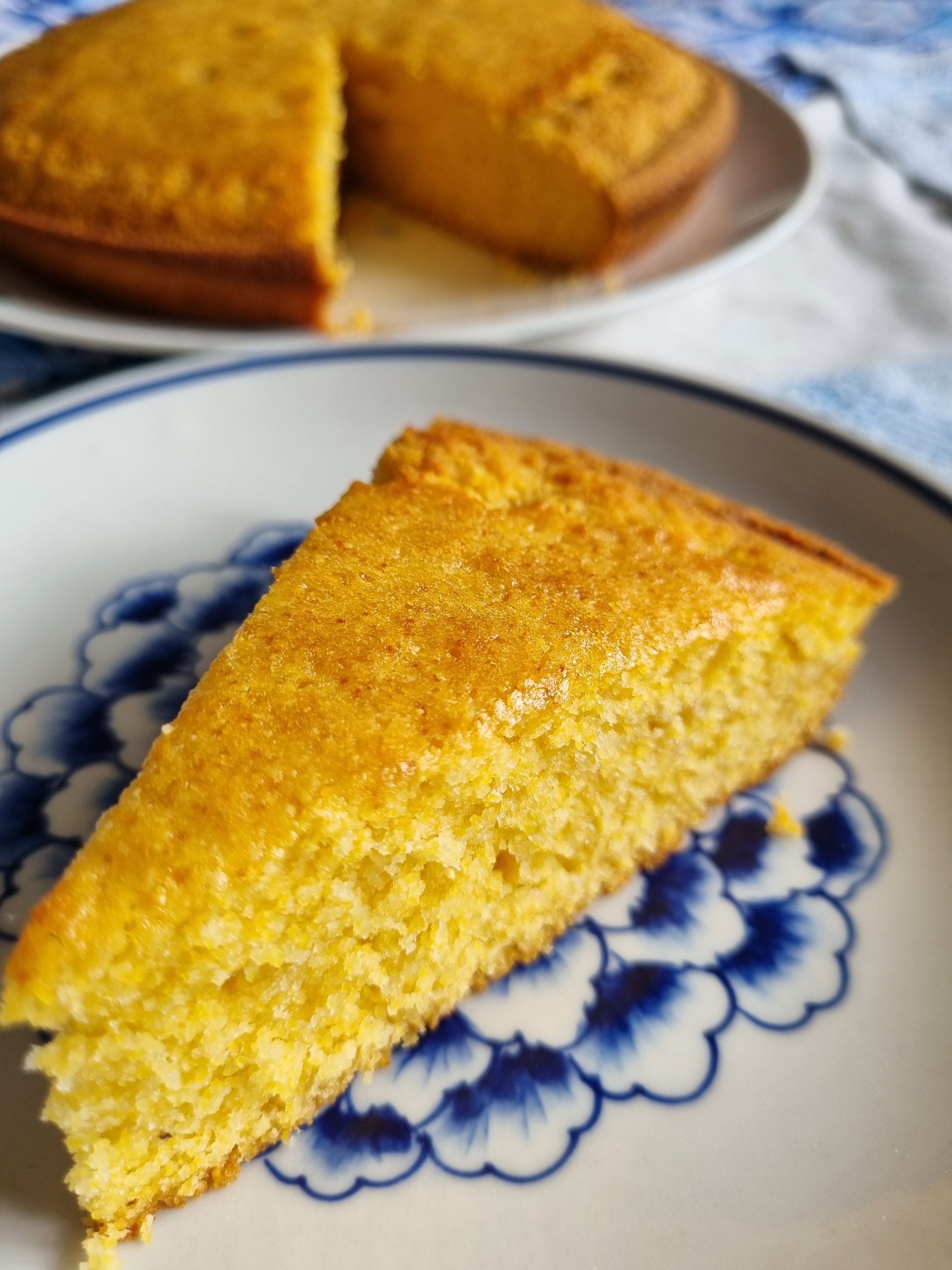Of course you all know B Dylan Hollis right? You’ve seen his videos on TikTok or YouTube and you’ve laughed along with his double (or single) entendres while he cooks a recipe he’s found in some antique book store or that has been shared with him by friends. And it made perfect sense that after trialling old recipes and becoming internet famous (and probably actual famous) he’d put out a cookbook of good recipes he’d discovered and a handful of bad ones. B Dylan Hollis’s Baking Yesteryear: the best recipes from the 1900s to the 1980s was the result.
It was hard to choose what to cook from this book. I started at the beginning, as you do, and almost chose the first several recipes on reading alone. I eventually settled on a handful which I cooked over a couple of weekends, with one that I cooked twice already (because I didn’t do a good job the first time). If you like cakes that aren’t overly sweet, this is definitely a great cookbook for starters. It also helps that Hollis has included metric measurements for things so that translating the recipe across to metric isn’t too difficult. Overall 4.5 stars out of 5 and I can’t wait to cook more from this book.
All cup measures in the text below are US imperial cups – so use the weight instead.
Hot Cross Buns (makes 12)

Ingredients
Buns
- 1/4 cup (55g) butter, softened
- 1/3 cup (75g) packed dark brown sugar
- 1 cup (235ml/242g) whole milk
- 1/5 cups (230g raisins
- 14g active dry yeast
- 3.5 cups (490g) bread flour, plus more if needed
- 1 tsp ground allspice
- 1 tbsp ground cinnamon
- 1tsp salt
- 3 large eggs
Crosses
- 1/2 cup (70g) plain flour
- roughly 5 tbsp water
Glaze
- 3 tbsp granulated sugar
- 3 tbsp water
Method
- In a saucepan, combine the butter, brown sugar, milk and raisins. Heat on low, stirring occasionally until the butter has melted and the sugar has dissolved. Remove from the heat and let cool to lukewarm (38C).
- When the mixture is cool enough, stir in the yeast and let sit for 5 minutes to dissolve.
- In the bowl of a stand mixer, fitted with a dough hook, combine the bread flour, allspice, cinnamon and salt.
- Add the wet mixture into the dry ingredients, and begin kneading on medium speed.
- Crack the eggs into a small bowl, and add one at a time to the dough with the stand mixer on. Let mix for 10 minutes.
- After 10 minutes, turn off the stand mixer and let the dough rest for 15 minutes, before resuming mixing at a medium speed for another 5 minutes.
- Ad this stage, if the dough presents as impossibly wet, more flour may be added, 1 tablespoon at a time with the stand mixer on. More should should only be added if the dough cannot be scraped from the bowl. This dough is inherently sticky.
- Remove the dough from the bowl and place onto an unfloured counter top. Begin kneading.
- After kneading for 10 minutes, collect the dough and place it in a large, greased bowl. Cover and let rise in a warm place for about 1.5 – 2 hours.
- Preheat your oven to 190C
- Remove the dough from the bowl, and divide into 12 equal pieces. To roll into balls, place dough onto an unfloured surface and roll in circular motions with a cupped hand. This should result in a uniform, smooth ball.
- Place balls at equal distances in a parchment-lined 22 x 33cm baking pan that has had it sides greased. Let proof for roughly 1 hour.
- See crosses method if adding crosses
- Bake for roughly 20 – 22 minutes, or until the tops of the buns are a light golden brown. Glaze if desired with the glaze method
Crosses method
- If adding crosses, mix together the plain flour and water to form a paste. Add paste to a piping bag, and pipe thin lines down the proofed dough to form crosses
Glaze method
- While the buns are baking, combine the 3 tablespoons of water and 3 tablespoons of sugar for the glaze in a small saucepan. Bring to a light simmer.
- As soon as the buns are out of the oven, brush the tops with the sugar mixture. Cool completely before storing in an airtight container.
Notes on this recipe
- There is a lot of kneading in this recipe. If you don’t have a stand mixer and are able to knead manually, you can do the whole thing by hand if you want. You can probably skip the manual kneading and leave it in the stand mixer if you are unable to knead manually too
- I skipped the crosses (obvs). I don’t have a piping bag and could not be arsed finding a substitute. So mine were crossless buns.
- Oh they were also amazingly tasty. None managed to get stored, everyone ate them as soon as they were at a temperature that they could be eaten at.
- Apparently in Bermuda, Hot Cross Buns are eaten with curry fish… and I learnt me a thing
Dutch Apple Cake

Ingredients:
Bottom layer
- 2 tbsp butter, softened
- 1/2 cup (110g) packed dark brown sugar
- 1//4 tsp ground nutmeg
- 2 cups (215g) thinly sliced apples (Granny Smith, Gala, or Honeycrisp)
Cake:
- 2 cups (280g) plain flour
- 1 tsp baking soda (bicarb)
- 1 tsp salt
- 1/2 cup (100g) white sugar
- 1/4 tsp ground mace (or nutmeg)
- 1/2 tsp ground cinnamon
- 1/2 cup (115g) butter, cold
- 3/4 cup (180g) buttermilk
- 1 large egg
Method:
Bottom layer
- Preheat the oven to 190C
- Liberally rub a 23cm cake pan with the softened butter. Combine the brown sugar and nutmeg, and sprinkle into the pan. Decoratively arrange the sliced apples over this sugar mixture.
Cake Method
- In a large bowl, combine the flour, baking soda, salt, sugar, mace and cinnamon. Cut the cold butter into small cubes.
- Rub the butter into the flour mixture until a crumbly consistency is achieved.
- Beat together the buttermilk and egg, then add this mixture to the dry ingredients and mix lightly to form a lumpy batter.
- Spoon evenly into the cake pan atop the apples, before smoothing the mixture by pressing gently downwards while spreading, as to not unseat the bottom layer.
- Bake for 30 – 35 minutes, or until a toothpick inserted into the centre can be removed clearly and the top reaches a golden brown.
- Immediately free the sides of the cake with a sharp knife, if needed, and invert onto a serving plate. Serve immediately with Chantilly cream or vanilla ice cream.
Notes on this recipe:
- The first time I made this cake I didn’t leave it in the oven long enough and I also tried using a spring form pan. Don’t use a spring form pan, the butterscotch (melted butter and brown sugar) will escape and burn on the bottom of your oven. So I made it again and in my oven it needed to cook for about 40 – 45 minutes. All ovens have their little quirks.
- The second time I made this I couldn’t get my hands on buttermilk (which is harder to find in Australia) so I used self-raising flour, omitted the baking soda/bicarb and used plain milk. The cake was still successful.
- The cake is delightful. Very tasty, not too sweet, and the spices and apple are perfect together (though I always add more cinnamon because you can rarely have too much of it
Continental Johnny Cake

Ingredients:
- 1 large egg
- 1/2 cup (100g) granulated sugar
- 1 cup (235ml) whole milk, scalded and slightly cooled
- 1/3 cup (80ml) honey
- 1/4 cup (60ml) vegetable oil, or melted lard
- 1 cup (140g) plain flour
- 1 cup (122g) polenta
- 2 tsp baking powder
- 1 tsp salt
- 1 tbsp butter
Method:
- Place a seasoned 23cm cast iron skillet in the oven before preheating it to 205C
- In a medium bowl, beat together the egg and granulated sugar with a whisk.
- Mix in the scalded milk, honey and vegetable oil.
- In a separate large bowl, combine the flour, cornmeal, baking powder, and salt. Add the wet ingredients and mix until well combined.
- When the oven is at temperature, carefully remove the hot skillet and add the butter to melt and coat the pan, ensuring the sides are well coated.
- Pour the batter into the skillet, and quickly return it to the oven to bake for 18 – 20 minutes. Alternatively, the batter may be baked in a greased 23cm pie dish (not preheated in the oven) for 20 – 25 minutes.
- Turn out onto a cutting board and serve warm.
Notes on this recipe:
- Incredibly subtly sweet. A lovely afternoon tea cake, definitely not for serving with a savoury stew.
- It’s super easy to make and pretty forgiving of measures (I used a metric cup before realising I’d put too much polenta in the cake, but it was totally fine).

Recent Comments